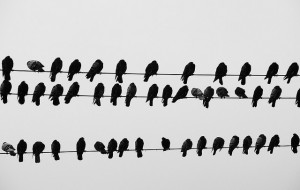About a month ago we discussed Participation and Identity in this course; you might remember that Kathryn and I spoke a lot about Jorge Luis Borges, while Megan Brown and I spoke about Tumblr a bit. The gist of the conversation was that, for a person who collects a number of things, that collection might become an identity for that person: I’m thinking of a reblog tumblr, where a person makes no “original” content but still conveys a sense of themselves through the things they chose to add to their collection. For instance, I am one of those people who reblog photographs of snails. Also, mycology tumblrs are a bigger thing than you might expect. If you prefer something more high-culture, I’ll add the Borges quote again:
A man sets out to draw the world. As the years go by, he peoples a space with images of provinces, kingdoms, mountains, bays, ships, islands, fishes, rooms, instruments, stars, horses, and individuals. A short time before he dies, he discovers that that patient labyrinth of lines traces the lineaments of his own face.
I haven’t been able to put together any concrete thoughts on this, so I’m not going to give this a full-post treatment, but since then I’ve been toying with the observation that GLAMs (galleries, libraries, archives, museums, and other such glamourous institutions) also have collections. You could also consider the GLAM’s collection a key component of its identity. I’m wondering if there’s any way to tie these two things together: the identity-as-collection of social media and the identity-as-collection of GLAMs. Can the practices of one be used to promote the practices of the other? The Horniman’s tumblr might be a place to look: could a library start a similar project (a book-by-book examination of the library?), linked in with the catalogue/OPAC in some way?
A related concept: making a portrait of someone by taking a photograph of books selected from their bookshelves was one of the Art Assignment’s art assignments.


